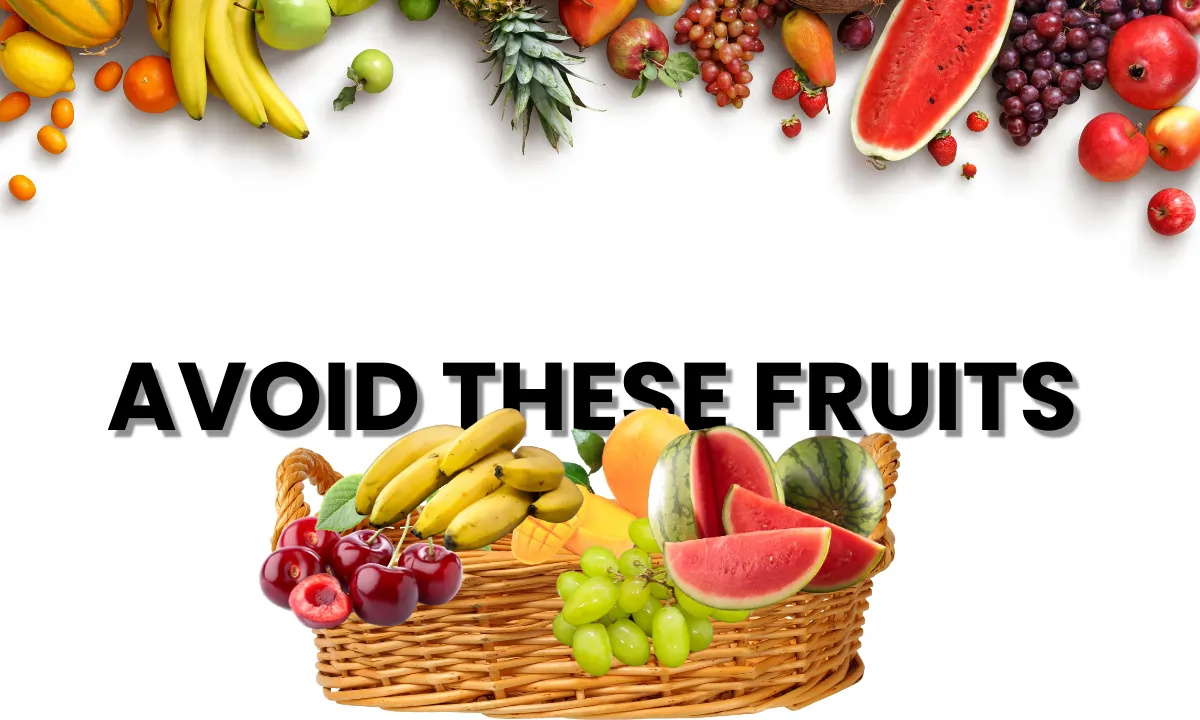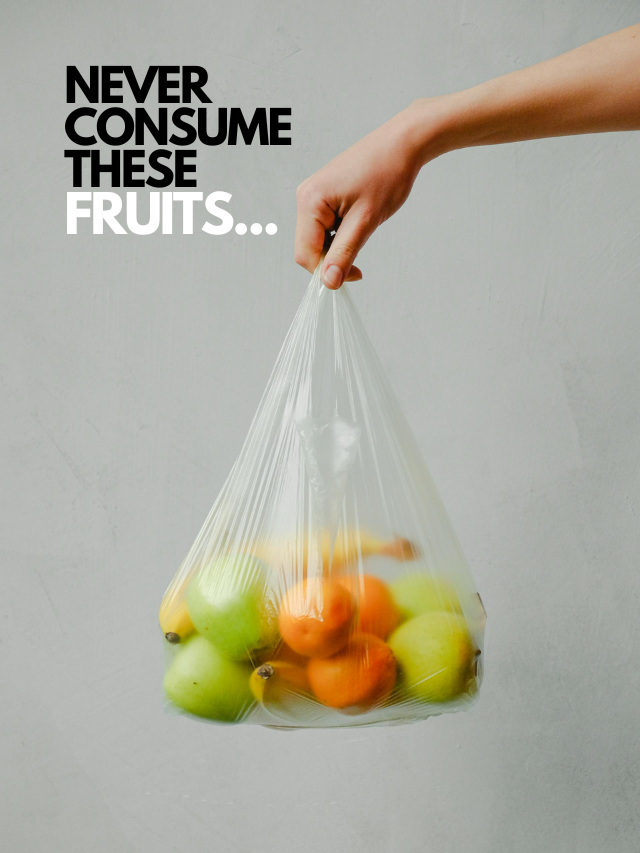“Healthy Living Starts Here: Master Your Blood Sugar Levels with the Right Foods”
High Blood Sugar, also known as hyperglycemia, happens when too much glucose or sugar is in one’s blood. It is mainly caused when the body does not produce enough insulin or cannot use it properly. The symptoms of high blood sugar are increased thirst, frequent urination, extreme hunger, blurred eyesight, slow-healing cuts, fatigue, skin infection, etc. The healthy blood sugar levels are less than 100 mg/dL after fasting for at least 8 hours and less than 140mg/dL after 2 hours of eating. According to some reports, 11.4% of India’s population has high blood sugar. People affected with high blood sugar must maintain a proper diet. They must avoid certain fruits that contain a lot of sugar.
High blood sugar causes:
— Rueben Hewitt (@FitFastCoach) January 11, 2024
• Erectile dysfunction
• Nerve damage
• Heart disease
• Alzheimer's
• Diabetes
• Cancer
Here are 5 ways I protect my blood sugar levels: pic.twitter.com/T3xSIHlmXZ
Banana
Bananas, a famous fruit worldwide, are considered healthy and contain iron. However, their impact on high blood sugar patients can be very concerning. The primary source of sugar in bananas is carbohydrates. This carbohydrate can quickly turn into glucose and enter the blood regulation. The sugar concentration in bananas depends upon their size, ripeness, and pairing with other foods.
A medium-sized banana, length 7 to 8 inches, contains approximately 27 grams of carbohydrates, out of which 14 grams are sugar or glucose. The glycemic index of bananas varies from 42 to 62. A banana with a GI of 55 or lower raises blood sugar more slowly than foods with a high GI.
A ripe banana has a higher GI than a less ripe one. The glycemic load (GL) accurately assesses bananas’ impact on a diabetic patient. A medium banana has a GL of around 10. A banana with a moderate GL can be included in a diabetic’s diet. But sometimes bananas cause blood sugar spikes, which is dangerous for a high blood sugar patient. That’s why some dieticians suggest consuming bananas with protein and fibre-rich food like Greek yoghurt and nuts. It slows down the absorption of sugars and minimizes sugar levels in the blood.
They also mention that diabetic persons must consume green, less ripe, and smaller bananas. Less ripe green bananas are higher in resistance starch and lower in sugar. Smaller banana means less carbohydrates and less carbohydrates mean less glucose or sugar.
Mango
Mango is another popular fruit that impacts the blood sugar levels of diabetics or high blood sugar patients. Mangos are naturally sweet and rich in carbohydrates and sugar. Consuming mangos in large quantities or without portion control raises sugar levels. A cup of sliced mango (165 grams) contains approximately 25 grams of carbohydrates, of which 23 grams are sugars like glucose and fructose.
In high blood sugar, it does not matter what you eat; it is more vital than how much you eat. If one eats mango excess, there is no spike in blood sugar levels, but if someone eats excess ripe mangoes, it leads to a spike in sugar levels. The range of glycemic index of mangoes is from 51 to 60. The glycemic load of a serving of mango is around 8, which means mangoes can be included in a diabetic diet if consumed in a controlled manner.
High blood sugar patients can consume one small to medium-sized mango twice weekly during the season. Mangos are rich in fibre, and water contains vitamins and minerals, which are beneficial for health. Eating mangoes with protein—and fat-rich foods reduces the spikes in sugar levels in the blood. The diabetic patient eats yoghurt, nuts, and seeds. Protein and fat take longer to digest, slowing down the absorption of sugar from mangoes into the bloodstream.
Watermelon
Watermelon is a hydrating and refreshing fruit, but its impact on high blood sugar may be concerning. This happens due to its high carbohydrate content and glycemic index. Watermelon contains 90% water, which makes it a low-impact fruit, but the natural sugar can cause a rapid rise in blood sugar levels. A typical serving of watermelon (weighing 150 grams) contains approximately 11 grams of carbohydrates, of which 9 grams are sugars or glucose, mainly glucose and fructose.
Watermelon’s glycemic index is 72, which means it is a high-GI fruit. It is digested and absorbed quickly and very efficiently, rapidly increasing sugar levels in the blood. The glycemic load for a serving size of a watermelon is five because it contains mostly water. The GL takes both the GI and quantity of carbohydrates to calculate. So, GL is a more comprehensive indicator of watermelon’s impact on blood sugar.
High GI and low GL of watermelon do not cause blood sugar spikes in moderate portions. Portion control is very essential for a diabetic patient. Excess watermelon consumption leads to ramp up of blood sugar rapidly. One high blood sugar individual can pair watermelon with protein or fibre-rich foods to slow sugar absorption. It reduces the accretion of blood sugar levels.
Cherries
Cherries contain many nutrients and antioxidants, but their natural sugar content also affects sugar levels in the blood. It has natural sugar, so if someone consumes a large amount without proper portion control, it may increase glucose levels. A cup of fresh cherries (weighing 14 grams) contains approximately 25 grams of carbohydrates, 20 grams of which are natural sugars or glucose. The glycemic index of cherries is 20-22, which is low. They have less impact on raising sugar levels in the blood than high-GI fruits. However, they have low GI, but they also contain sugar. A diabetic person should consume in moderation to maintain balance sugar levels.
The glycemic load of cherries is 6 per serving. This low GL means that the sugar contained in cherries moderately impacts blood sugar when eaten in standard portions. If portion sizes are controlled, the cherry is suitable for diabetic people. The antioxidants help to manage sugar levels in the blood and reduce insulin resistance in diabetic patients.
Grapes
Grapes have a prominent impact on blood sugar levels due to their high natural sugar content. If diabetic patients consume grapes in large quantities without moderation, their sugar levels will rapidly increase, leading to diabetes. A cup of grapes (weighing 151 grams) contains approximately 27 grams of carbohydrates, of which 23 grams are sugars or glucose.
The glycemic index of grapes ranges from 43 to 53, which is medium. Grapes do not have high GI, but they still have a negative impact on sugar levels in the blood because of their high sugar content. The GL of grapes is about 11 for serving grapes, which is moderate. Without portion size, consuming grapes causes blood sugar spikes.
Can a balanced diet and mindful fruit choices help to manage diabetes and boost your energy for a fulfilling life?
People with high diabetes can improve their health by following a balanced diet, which can provide them with all the essential nutrients, support optimal body function and also help them to regulate weight. A maintained diet can enhance the energy level and lead to a healthier and more fulfilling lifestyle.
Monitoring fruit intake is necessary for one with high diabetes. There are many fruits that comprise spike glucose levels. By comprehending the glycemic index and choosing a low-sugar option, one can decrease the risk of complications and maintain overall health and well-being.
FAQ
What is high blood sugar?
High blood sugar, or hyperglycemia, occurs when there’s too much glucose in your blood.
What are the symptoms of high blood sugar?
Increased thirst, frequent urination, extreme hunger, blurred vision, slow-healing cuts, fatigue, skin infections.
What is the glycemic index (GI)?
The GI measures how quickly a food raises blood sugar levels. A higher GI means a faster rise.
Are bananas bad for people with high blood sugar?
Ripe bananas have a higher GI, so they can raise blood sugar levels. However, green bananas and consuming bananas with protein and fiber can help mitigate this effect.
Can I eat mangoes if I have high blood sugar?
Yes, mangoes can be included in a diabetic diet in moderation. Eating them with protein and fat-rich foods can help control blood sugar spikes.
Is watermelon safe for people with high blood sugar?
While watermelon has a high GI, its low glycemic load and high water content make it less likely to cause significant spikes in blood sugar when consumed in moderation.
Can I eat cherries if I have high blood sugar?
Cherries have a low GI, but they still contain sugar. Consuming them in moderation is key.
Are grapes bad for people with high blood sugar?
Grapes have a medium GI and high sugar content, so they can raise blood sugar levels. Consuming them in moderation is essential.
What is the best way to manage high blood sugar through diet?
Maintain a balanced diet, monitor fruit intake, and choose low-sugar fruits.
Can a balanced diet help with energy levels?
Yes, a balanced diet can provide essential nutrients, support body function, and improve energy levels.
How can I choose the right fruits for my diet if I have high blood sugar?
Consider the glycemic index and glycemic load of fruits, and pair them with protein and fiber-rich foods.



